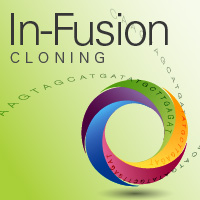Plasmids are semi-autonomous circular DNA molecules and can be transferred from one bacterium to another through a process called conjugation. Fluorescent gene markers such as GFP can be inserted into plasmids to track this movement within complex bacterial communities, using Fluorescence Activated Cell Sorting (FACS) (Klümper, 2015).
The majority of researchers still use traditional restriction-ligation based cloning to insert these fluorescent markers into plasmid vectors at specific sites. However, this cloning method has a major limitation: it requires the presence of unique restriction sites at the desired locus in the plasmid, but which are not present within the insert itself. When working with large plasmids isolated from natural environments, it can be difficult, if not impossible, to find restriction sites that fulfill these requirements within the exact region where the fluorescent marker needs to be cloned.
In the experiment described here, the seamless In‑Fusion Cloning method was used to assemble a 4-kb GFP genetic cassette within a cloning vector (pKD46), simultaneously including upstream and downstream homology arms to a noncoding site in the final destination vector (a 100-kb wild-type IncK plasmid), without using any restriction enzymes. A wild-type strain of E. coli containing the IncK plasmid was then transformed with that cloning vector, at which point the GFP cassette was transferred from the cloning vector into the IncK plasmid via homologous recombination (Figure 1).
Indeed, In‑Fusion Cloning enables this independence from restriction sites, accurately and efficiently fusing PCR-generated inserts and linearized vectors through the use of a 15–20 bp overlap at each fragment end. Exonuclease activity chews back one strand of each linear fragment, creating compatible ends for joining and annealing in vitro. Cohesive bonds are then formed after gap repair in vivo in the bacterial cell, following transformation, thus completing an entire cloning workflow without the use of restriction enzymes or ligase.







